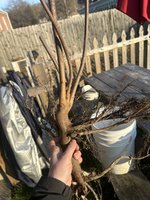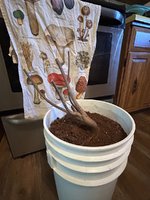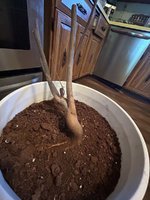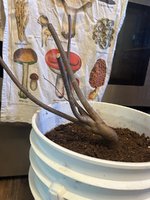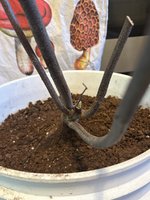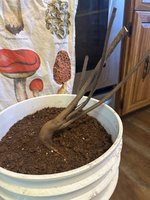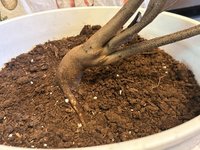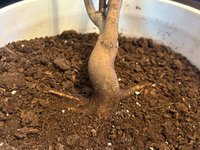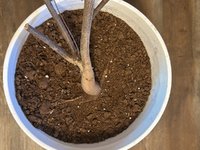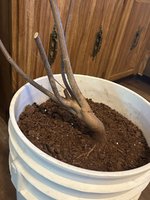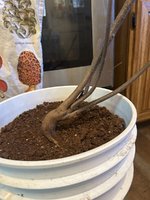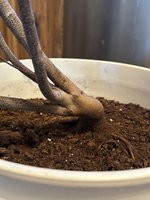himmelich
Seedling
Hi I have had this eastern redbud tree growing under my garden bed since my son was born. Now it is 5 years old and I just transplanted it to a bucket. I have no idea what I am doing so forgive my ignorance of terminology etc. I am trying my best to figure it out and have watched a lot of videos but I am overwhelmed. I like the shape and form of the central trunk but I do not know where to go from here. There is not a lot of info about this species or this kind of clumping growth pattern. Thanks to anyone able to help me out. I hope I didn’t butcher it too bad 


